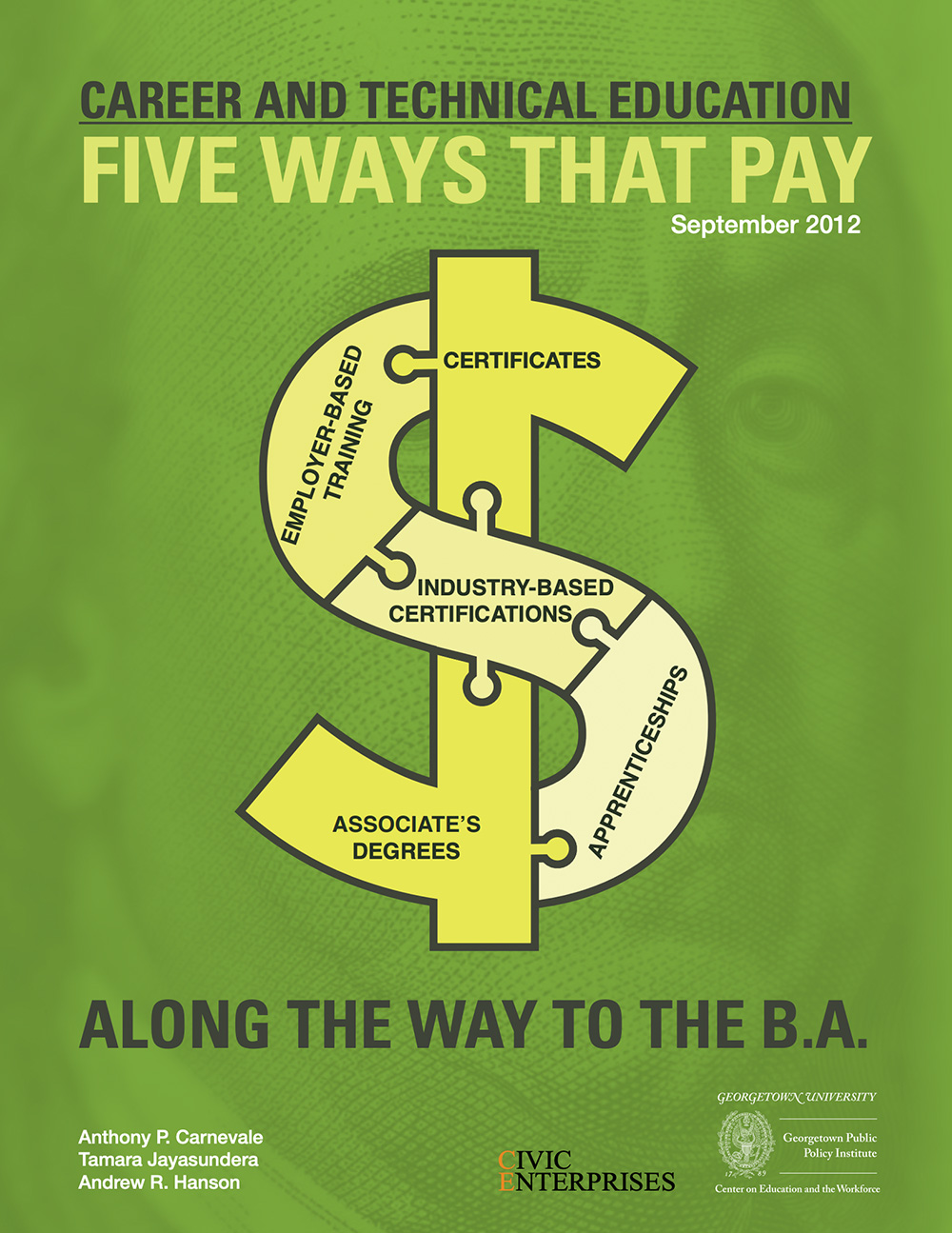Career and Technical Education
Five Ways That Pay Along the Way to the B.A.
Key Findings
Resources
Our report details the 29 million “middle jobs” – jobs that pay middle class wages for workers without a four-year degree and the five major pathways that lead to those jobs.
Getting a Bachelor’s degree is the best way for most workers to make middle-class wages. In this report, however, we show there are 29 million jobs (21% of all jobs) for workers without Bachelor’s degrees. The report also details five major sub-baccalaureate, career and technical education (CTE) pathways: employer-based training, industry-based certifications, apprenticeships, postsecondary certificates, and associate’s degrees.


